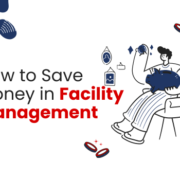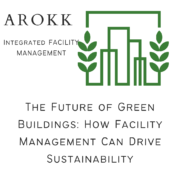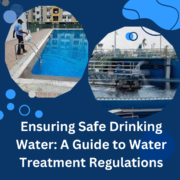Innovative Solutions to Solve Water Shortages in the Facility Management.
/0 Comments/in Facility Management/by Arokk Integreted Management Services Pvt. Ltd.How are we going to tackle the big, thirsty elephant in the room – water scarcity? It’s a topic that gets quite a bit of airtime, but it often feels like it’s all talk and no action.
Well, not anymore!
Facility management firms are rolling up their sleeves and diving head-first into the challenge. And let me tell you, the solutions they’re coming up with are nothing short of innovative. In this blog post, we’re going to break down these solutions into bite-sized pieces that are super easy to digest, even for students. So, grab a glass of water (while you still can!), and let’s get into it!
Water Scarcity: The Drip, Drip, Drip of a Global Challenge
First off, let’s understand the beast we’re dealing with. Water scarcity affects more than just your ability to take long showers. It’s about agriculture, industry, and ecosystems all thirsting for more water than we can provide. With populations booming and climates changing, the tap isn’t flowing as abundantly as it used to.
The Pioneers: Facility Management Firms
When it comes to the forefront of battling water scarcity, facility management company are leading the charge. Their unique position managing vast properties and complexes allows them to implement wide-reaching and impactful water conservation strategies.
Innovative Solutions to Water Scarcity
Rainwater Harvesting Systems: These aren’t your grandma’s rain barrels. We’re talking about sophisticated systems designed to capture, store, and treat rainwater for non-potable uses like irrigation, flushing toilets, and cooling towers. By tapping into this underutilised resource, facilities can significantly reduce their reliance on municipal water supplies.
Smart Irrigation Technologies: Gone are the days of sprinklers running in the rain. Smart irrigation systems use weather data, soil moisture sensors, and evapotranspiration rates to optimize watering schedules and amounts. This technology ensures that landscapes receive just the right amount of water, reducing waste and saving gallons upon gallons.
Water-Efficient Fixtures: Facility managers are swapping out old, inefficient fixtures for modern, water-saving models. Think faucets that use aerators to reduce flow without compromising water pressure, dual-flush toilets that offer two flush options, and urinals that use minimal water or even none at all. These changes might seem small, but when implemented across large buildings, the water savings are anything but.
Greywater Recycling Systems: Greywater – wastewater from sinks, showers, and laundry – is getting a second life in facilities equipped with recycling systems. After treatment, greywater is safe for reuse in landscape irrigation and flushing toilets. It’s a brilliant way to double-dip into the water supply without tapping into more freshwater resources.
Leak Detection and Management: Even a small leak can waste a staggering amount of water over time. Facility management firms are using advanced leak detection technologies to find and fix leaks fast. Some systems can even monitor water flow in real time, alerting managers to unusual usage patterns that could indicate a leak.
Water Treatment: Facility management firms are leveraging membrane bioreactors (MBRs) and advanced filtration systems like reverse osmosis to treat wastewater, making it reusable for irrigation and industrial processes. These innovative water treatment solutions play a pivotal role in reducing freshwater demand and combating water scarcity effectively.
Why Do These Solutions Matter?
Implementing these innovations doesn’t just save water; it saves energy, reduces bills, and can even improve the reputation of the managed properties. In an era where environmental responsibility is more important than ever, these efforts demonstrate a commitment to sustainability that residents, tenants, and customers value highly.
Engaging the Next Generation
Now, it’s not just about installing tech and calling it a day. Education plays a huge role in water conservation. Facility management firms are also working to educate residents and tenants about the importance of water conservation and how they can contribute. After all, every drop counts, and everyone has a part to play.
The Ripple Effect
The innovative water conservation strategies employed by facility management firms have a ripple effect, inspiring other sectors to adopt similar practices. By setting a precedent for sustainability, they’re not just tackling water scarcity; they’re leading a wave of environmental responsibility that reaches far beyond their own buildings.
Water Treatment:
Facility management firms are leveraging membrane bioreactors (MBRs) and advanced filtration systems like reverse osmosis to treat wastewater, making it reusable for irrigation and industrial processes. These innovative water treatment services play a pivotal role in reducing freshwater demand and combating water scarcity effectively.
Wrapping It Up: A Clearer Future Ahead
As we wrap up, it’s clear that the role of facility management firms in combating water scarcity is both impactful and inspiring. Through a combination of cutting-edge technology, strategic implementation, and educational initiatives, they’re not just managing facilities; they’re safeguarding our water future.
Water scarcity might seem like a daunting challenge, but with innovative solutions like these, we’re taking significant strides towards a more sustainable and water-wise world. So, the next time you enjoy a glass of clean, fresh water, remember the behind-the-scenes efforts that help make it possible.
Let’s all do our part in supporting and promoting water conservation efforts. Every action, no matter how small, contributes to a bigger wave of change. Together, we can ensure that our blue planet remains just that – beautifully blue.
FAQs:
What is water scarcity?
Water scarcity is a situation where the available water supply is insufficient to meet the demand of a region’s population, agriculture, and industries.
How can I contribute to water conservation?
Simple actions like fixing leaks, using water-efficient fixtures, collecting rainwater, and being mindful of your water usage can make a big difference.
Are these water-saving technologies expensive?
While some technologies require an initial investment, they often lead to significant savings in water and energy costs over time, making them economically viable and environmentally friendly options.
And there you have it! A deep learning into how facility management service are leading the charge in tackling water scarcity with innovative solutions. I hope this exploration has not only informed you but also inspired you to think about the role each of us plays in conserving our precious water resources.










Leave a Reply
Want to join the discussion?Feel free to contribute!